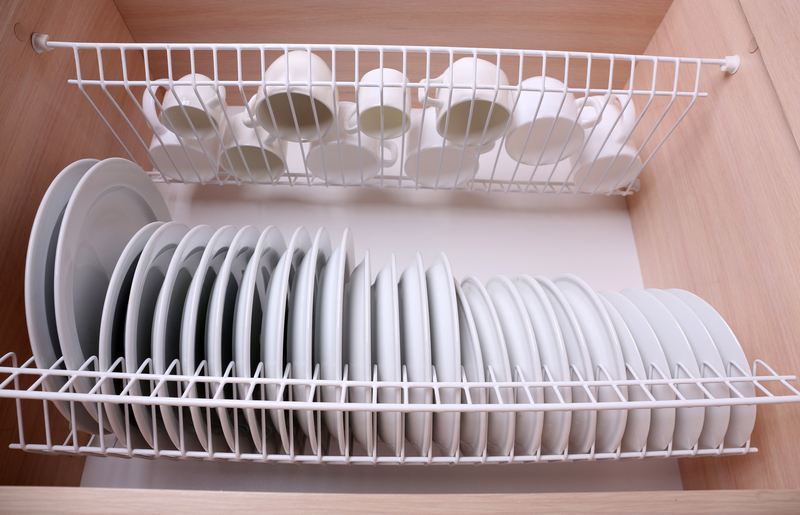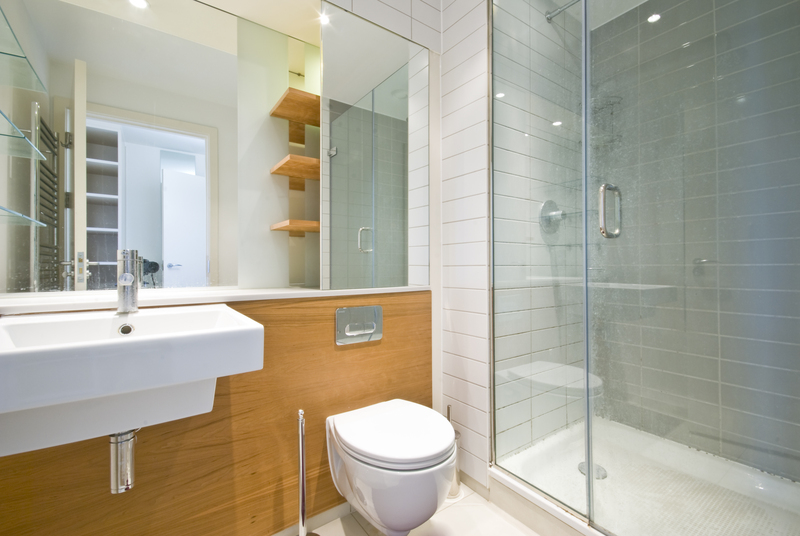Businesses Thrive in Clean Air Environments
Posted on 15/06/2025
Businesses Thrive in Clean Air Environments: Unlocking the Power of Fresh Air
In today's fast-paced corporate world, clean air has emerged as a crucial factor for business success. Organizations that prioritize air quality not only foster a healthier workspace but also discover a surprising boost in productivity, employee satisfaction, and bottom-line results.
This comprehensive article explores the multifaceted ways in which businesses thrive in clean air environments. We'll delve into the science, employee well-being, operational benefits, practical tips, and technological solutions to ensure stress-free and fresh workplaces for all.

Why Clean Air Matters for Businesses
The Link Between Air Quality and Workplace Productivity
Extensive research underscores a direct correlation between indoor air quality (IAQ) and workplace outcomes. Poor air quality can lead to symptoms such as headaches, fatigue, and difficulty concentrating. In contrast, offices with fresh, uncontaminated air report noticeable improvements in staff performance and morale.
- Enhanced Cognitive Function: Studies from Harvard University reveal that employees working in environments with low levels of air pollutants make decisions 60% faster than those in spaces with substandard air quality.
- Lower Sick Days: Offices prioritizing clean air see up to a 30% reduction in absenteeism attributed to respiratory ailments, allergies, or general malaise.
- Increased Retention Rates: A healthy, thriving work environment plays a vital role in attracting and retaining top talent, especially as younger generations prioritize workplace well-being.
The Financial Gains of Fresh Air
Investing in clean air solutions is not just about employee health--it also makes solid business sense. According to the World Green Building Council, optimizing office air quality leads to:
- Lower Healthcare Costs: Fewer sick employees mean reduced medical expenses and insurance claims.
- Boosted Performance: Higher cognitive abilities directly translate to increased profitability and efficiency.
- Enhanced Brand Image: Green, health-conscious workplaces attract more clients and investors, elevating corporate reputation.
Comprehensive Benefits of Clean Air for Workplaces
Physical Health Advantages
Clean air environments actively reduce exposure to harmful particles such as volatile organic compounds (VOCs), dust, pollen, and pathogens. The shutdown of possible indoor pollution sources significantly diminishes the risk of:
- Asthma attacks and aggravated allergies
- Respiratory irritations and chronic diseases
- Headaches, eye strain, and fatigue
- Spread of viral and bacterial infections
Mental Well-being and Focus
Fresh air workplaces are associated with reduced symptoms of occupational stress. Employees in clean air settings report feeling more energetic, creative, and focused, with improved mood stability.
- Better Concentration: Unpolluted air supplies the brain with abundant oxygen, promoting sharper memory and decision-making.
- Higher Motivation: A sense of care and comfort in the workplace encourages enthusiasm, innovation, and collaborative spirit.
Key Strategies: Creating Clean Air Work Environments
1. Invest in High-Quality Air Filtration Systems
Modern HVAC systems equipped with HEPA filters can eliminate up to 99.97% of airborne particles, including pathogens like viruses and bacteria. Regular maintenance, filter changes, and system upgrades are critical for optimal performance.
2. Increase Natural Ventilation
When possible, integrating natural airflow by opening windows or installing ventilation units can dilute indoor pollutants. Cross ventilation and air purifiers support continual circulation and freshness.
3. Minimize Indoor Pollution Sources
Be proactive in identifying and eliminating potential contaminants:
- Use low-VOC paints, adhesives, and office supplies
- Avoid synthetic fragrances and chemical-heavy cleaning products
- Maintain humidity levels to discourage mold growth
4. Integrate Nature Inside
Biophilic design and indoor plants not only boost overall well-being, but many species act as natural air purifiers. Ficus, spider plants, and peace lilies are commonly chosen for their ability to absorb toxins.
5. Monitor Air Quality Regularly
Use smart sensors to track levels of CO2, airborne particles, humidity, and temperature. Data-driven insights help facilities teams react swiftly to any drops in air quality and avoid costly disruptions.
The Impact of Clean Air on Different Business Sectors
Corporate Offices
Productivity and collaboration define success in office settings. Businesses thrive in clean air environments due to improved employee attention spans, faster decision making, and fewer disruptions caused by health issues.
Retail and Hospitality
For stores, restaurants, and hotels, customer perception is paramount. Clean air creates a welcoming atmosphere, enhances comfort, and reduces the risk of spreading airborne illnesses among guests and staff.
Industrial and Manufacturing Facilities
In sectors with higher exposure to fumes and particulates, robust air management protects against chronic illnesses and regulatory penalties--ensuring compliance and workforce well-being. Fresh air also boosts alertness and safety in physically demanding roles.
Healthcare and Education
Hospitals and schools are environments where vulnerable populations gather. Maintaining pristine air quality is critical to preventing outbreaks and supporting healing, focus, and growth.
Technologies Driving Clean Air Innovation
- HEPA and Ultraviolet Filters: Harness advanced filtration and germicidal UV to eliminate viruses, bacteria, and microdroplets.
- Smart IoT Air Quality Monitoring: Real-time sensors linked to automated ventilation systems for round-the-clock freshness.
- Plant-based Biofilters: Leverage green walls and moss panels that naturally clean and humidify the air.
- Energy Recovery Ventilators: Efficiently balance temperature, humidity, and fresh air supply, reducing energy bills.
Overcoming Challenges: A Roadmap for Cleaner Air
Addressing Common Obstacles
Businesses may worry about installation costs, system maintenance, or operational downtime. However, the long-term savings from reduced sick leave and heightened output quickly outweigh initial expenses. Many governments now offer grants, tax incentives, and certifications (like LEED or WELL) for air-quality investments.
Engaging Employees in Clean Air Initiatives
- Encourage feedback on comfort, allergies, or air freshness.
- Hold regular awareness workshops on office hygiene and personal responsibility.
- Make air-quality data visible to promote transparency and trust.
Case Studies: How Businesses Prosper in Breathable Workplaces
Tech Giant Reduces Sick Days by 28%
A leading technology company invested in state-of-the-art air purification and smart controls. Within a year, they observed a 28% drop in absenteeism, improved team morale, and a 15% increase in internal satisfaction surveys. The company credited "transformative air quality" as a key driver.
Small Creative Firm Attracts Top Talent
A boutique advertising studio embraced green walls, maximized window ventilation, and replaced harsh cleaners with eco-friendly alternatives. The positive reviews and word-of-mouth helped them recruit skilled designers eager for a healthier creative environment.
Hotel Chain Earns Customer Loyalty
By investing in HEPA filtration and visible clean air pledges, a mid-market hotel saw repeat bookings increase by 20% and received glowing feedback from guests suffering from allergies or respiratory issues.
How to Get Started: Practical Steps for Business Owners
- Assess Current Indoor Air Quality: Hire professionals to test, or install digital IAQ sensors.
- Engage Facility Managers and Staff: Share findings, gather input, and develop a joint action plan.
- Prioritize High-Impact Areas: Start with shared spaces such as meeting rooms, lobbies, or production sites.
- Implement Upgrades: Upgrade air filters, ventilators, and introduce air-purifying plants.
- Monitor & Adapt: Review air quality metrics regularly and adjust policies as necessary for ongoing improvements.

The Future of Clean Air Environments in Business
The trend toward healthy, sustainable workspaces is only accelerating. Companies embracing clean air innovations set new standards for corporate responsibility, competitiveness, and culture. As environmental consciousness grows among consumers and workers alike, fresh air workplaces will become the norm, not the exception.
With regulatory momentum and technological advances, organizations remain empowered to deliver high standards of air purity. Investing in these initiatives today paves a future where businesses truly thrive in clean air environments--making it a win-win for people, profits, and the planet.
Conclusion: Clean Air is Good Business
Prioritizing clean air in the workplace is more than a wellness perk--it's a strategic business decision that unlocks productivity, innovation, and growth. Whether you're leading a multinational corporation or a local startup, the path is clear: Businesses thrive in clean air environments. Embrace the power of fresh air, and watch your organization reach new heights of success.




